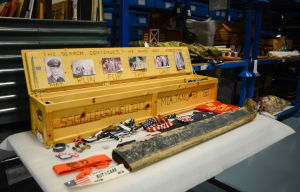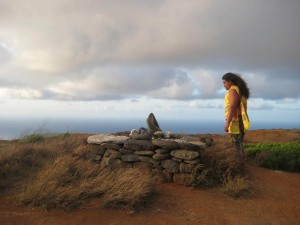
In the first chapter of his book Do Museums Still Need Objects? Steven Conn explains that over time museum exhibits have begun to display fewer objects. While fewer objects on display creates a more visually appealing display for visitors, “fewer objects means fewer opportunities for alternate stories to compete”(Conn 23). Fewer objects in exhibits also poses the question: what happens to the objects that aren’t on display? Are they still valuable to museums and the public or should they be repatriated?
As part of an internship with the National Park Service (NPS) I had the opportunity to take a tour of the NPS Museum Resource Center in Landover, MD. The Museum Resource Center stores about 2 million artifacts from various NPS sites in the Washington D.C. area. Most of the artifacts I saw were items left at the Vietnam Veterans Memorial such as dog tags, notes, flags, wooden crosses, teddy bears, and even a motorcycle that was left at the wall by a group of veterans from Wisconsin. Since the memorial was built the NPS has collected, catalogued, and stored about 50,000 items. Seeing these artifacts was really cool but I couldn’t help thinking about how privileged I was to view them because the NPS Museum Resource Center like most museum storage sites is restricted to the general public.
While there are plans to build an education center at the wall by 2016 there is currently no place to display all these artifacts. Even once the education center is built it still won’t be able to display all 50,000 items. How will the education center decide which soldier’s stories to tell? Or which of the thousands of notes or decorated wooden crosses to display? Can one object represent a group in cultural and history museums the way it typically does at science museums?

In a video interview with the Washington Post, Jason Bain, a senior collections curator with the Vietnam Veteran’s Memorial Fund, explains that the education center will be unique because it will be curated by the public because they have decided which objects to leave at the wall. As long as most of these objects are hidden from the public in a storage facility the education center will never truly be curated by the public. In the end the NPS and the Vietnam Veterans Memorial Fund will be the ones deciding which objects to display and which stories to tell. While I believe that whatever choices these groups make will ultimately be beneficial in educating the public about veterans and fallen soldiers’ experiences during the war as well as the experiences of their families and loved ones it is important to recognize that the objects that will be exhibited are just the tip of the iceberg of the whole story and that most artifacts remain in storage and hidden from the public.
References and Additional Reading:
“The Things They Left Behind” By Ariel Min. PBS News Hour.
Image 1: By Ariel Min. http://www.pbs.org/newshour/rundown/the-pieces-they-left-behind/
Image 2: http://voices.washingtonpost.com/capitalweathergang/images/vietnam5_std.jpg



